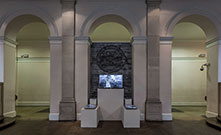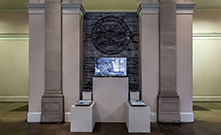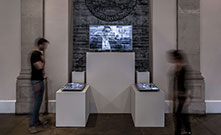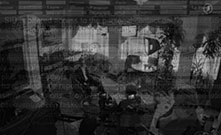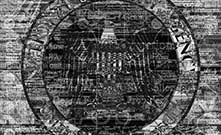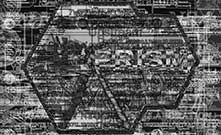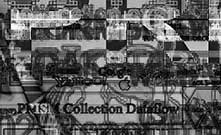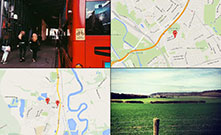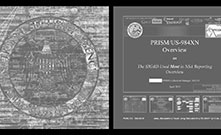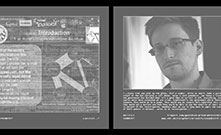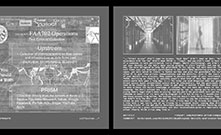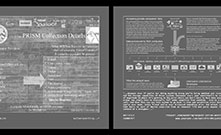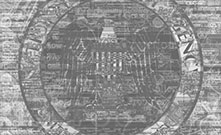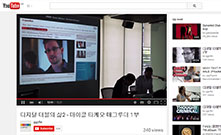PRISM
v1.0 by: Michael Takeo Magruder, 2014
A new media installation reflecting on programs of mass surveillance and issues of personal privacy in the Information Age.
Installation Documentation:
About the Artwork:
On 6th June 2013, journalists from The Guardian and Washington Post reported that the US National Security Agency (NSA) was undertaking a portfolio of clandestine mass surveillance programs on a scale reminiscent of George Orwell’s dystopian society of 1984. The NSA's initiatives supposedly ranged from the bulk collection of email and telephone records to infiltrating the data infrastructures of every leading Internet company and service provider.
In response to these allegations, the US government claimed that the NSA and other sections of its intelligence community were legally operating under the authority of laws such as the Foreign Intelligence Surveillance Act of 1978 (FISA) and the USA Patriot Act of 2001 that had been amended in the post-9/11 political landscape to support the nation's continuous "War on Terror". However, the surveillance activities in question were not targeted at specific individuals or groups of interest, but rather focused on amassing personal data from millions of unsuspecting citizens indiscriminately and without clear jurisdiction or transparent oversight.
The first NSA program to be disclosed in these reports was PRISM – a "special source operation" responsible for collecting stored data and live Internet transmissions obtained from a consortium of technology giants including Apple, AOL, Facebook, Google, Microsoft and Yahoo. Collaborating with the Five Eyes network and major European allies, the NSA used PRISM and other related programs to data mine the world's electronic communications systems in order to create vast information repositories that would give analysts the ability to "select" and "target" any individual in the world.
Given the increasingly connected digital nature of society, any proclaimed gains from such all-pervasive methods of surveillance must be weighed against the costs to personal freedom and privacy. With this in mind, perhaps it is useful to consider the story of the person who brought these revelations to the public's attention, Edward Snowden – an everyman who might now be the Winston Smith of this information age.
Source Material:
· complete collection of leaked classified documents released by Edward Snowden (as of 01/03/2014) - obtained via various online news media repositories and torrent file-sharing websites
· sequenced video footage of Edward Snowden interview with Glenn Greenwald and Laura Poitras on 06/06/2013 - obtained via www.youtube.com
· sequenced video footage of Edward Snowden interview with German TV channel NDR on 26/01/2014 - obtained via www.youtube.com
Digital Media Documentation:
In Dialogue with:
Sarah Grochala [ curation ]
With Thanks to:
Headlong & the Cultural Institute at King's College London [ production ] . Btihaj Ajana [ academic discourse ] . Angelo Petsas [ technology design ] . William Warrener [ KCL installation ]
Supported by:
PRISM v1.0 was commissioned and produced in 2014 by Headlong in partnership with the Cultural Institute at King's College London with generous support from the Department of Digital Humanities, King's College London.
Artwork Requirements:
[ gallery ] Modular new media installation using: Windows/Mac computer systems capable of real-time audiovisual rendering; 1x single-channel and 1x dual-channel high definition video systems; 2.1 audio system; large format digital print banner; and artbook publication.
[ online ] Windows/Mac computer system with Chrome, Firefox, Internet Explorer or Safari; the Adobe Flash and Reader plugins; and stereo audio. A high-specification CPU/GPU, colour display with ≥1080p resolution and high-speed Internet connection are recommended.
